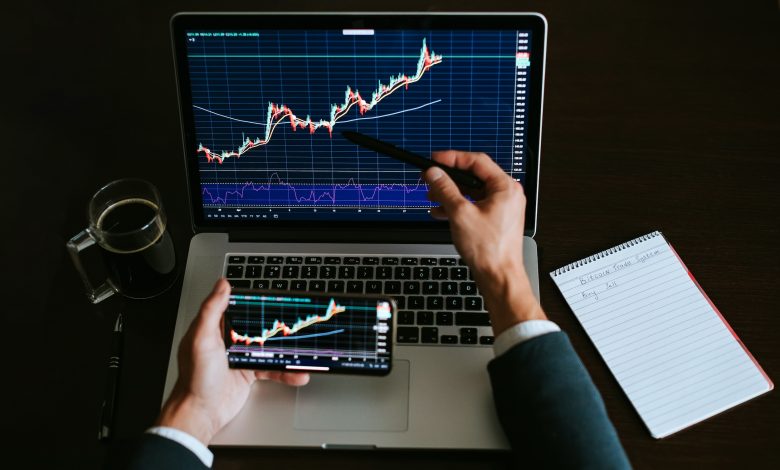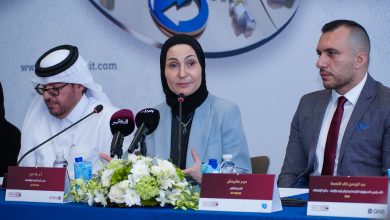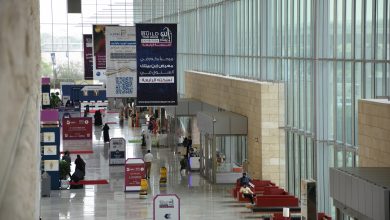
Qatar’s non-energy private sector economy continues to recover in September
استمرار تعافي اقتصاد القطاع الخاص القطري غير المرتبط بالطاقة في سبتمبر الماضي
QNA
Doha: Qatar Financial Center procurement managers’ data index showed that the economy of private sector non-energy companies continued to expand in September, in line with the easing of closures taken by the state to contain the coronavirus outbreak.
The production and new business indices had grown again as companies reported that their business had returned to normal after months of closure and after the reopening of industrial zones.
The main PMI recorded 51.4 points in September, down from the August reading of 57.3 points. The latest reading indicated that business in the non-energy-related private sector economy continued to improve, with the latter reading being the third highest in more than two years.
Since the start of the study in April 2017, the highest reading recorded in the PMI has been 49.5 points, while the average PMI for the third quarter of this year was 56.2 points higher.
This is the highest quarterly average recorded since the study began, and the second highest quarterly average was recorded at 53.5 points in the fourth quarter of 2017.
At the sub-sector level, the wholesale and retail sector (58.4 points) was the strongest performer in the third quarter, followed by construction (57.7 points), manufacturing (57.6 points) and services (52.1 points).
Economic conditions recorded another strong expansion, albeit at a more moderate pace.
Monthly based growth rates in the new production and business indices also saw a new decline in September after the record expansion in July, but the reading of the indicators remained one of the highest since the start of the study, and the new order index recorded the third highest reading in the history of the study.
The employment index rose to a six-month high in September and was in line with the long-term average study, indicating the stability of the workforce.
The companies handled the backlog by increasing their purchasing activities, but that was not enough to prevent a decline in production supplies stocks.
Data for September indicated a new improvement in the supplier delivery time index and a drop in total inputs prices after the record inflation rate recorded in July. Prices of inputs fell for the first time in three months, indicating a return to normalcy.
Under comparisons with official GDP, monthly PMI readings can be compiled on a quarterly average basis. Since the start of the study in April 2017, the quarterly PMI of 0.88 points has been associated with the annual change in the percentage of GDP in real terms, with the 50.0 points reading in the PMI equivalent to 1% year-on-year growth.
The latest official data indicate an annual growth of 0.9% in the first quarter of 2020, and PMI data for the second quarter of 2020 show a 4.6% year-on-year decline in GDP, reflecting the impact of closures on the economy. PMI data for the third quarter of 2020 indicate a recovery in the subsequent period and a growth of 4.3%.
Sheikha Al-Anood Bint Hamad Al Thani, Executive Director of Business Development at the QFC Authority, said the PMI data for the third quarter of 2020 indicates a strong recovery in the Qatari economy due to the easing of closures aimed at combating the spread of the Coronavirus from the second half of 2020.
The latest trend in the data is in line with a 4.6% decline in GDP in the second quarter of the year and a strong GDP recovery of 4.3% in the third quarter of this year.
The PMI for Qatar is compiled from the responses to the study from a committee of about 400 private sector companies.
The Committee covers several areas, including manufacturing, construction, retail and wholesale, as well as services, and reflects the structure of the non-energy economy, according to official national accounts data.
قنا
الدوحة: أظهرت بيانات لمركز قطر للمال عن مؤشر مديري المشتريات لدولة قطر، أن اقتصاد شركات القطاع الخاص غير المرتبط بالطاقة استمر في التوسع خلال شهر سبتمبر الماضي، توازيا مع تخفيف إجراءات الإغلاق المتخذة بالدولة لاحتواء تفشي جائحة فيروس كورونا /كوفيد – 19/.
وأشارت إلى أن مؤشري الإنتاج والأعمال الجديدة، شهدا نموا جديدا بسبب تقديم الشركات لتقارير تفيد بأن أعمالها عادت إلى وضعها الطبيعي بعد إغلاقها لأشهر وبعد إعادة فتح المناطق الصناعية.
وسجل مؤشر مديري المشتريات الرئيسي 51.4 نقطة في شهر سبتمبر الماضي، منخفضا عن قراءة شهر أغسطس البالغة 57.3 نقطة. وأشارت القراءة الأخيرة إلى أن الأعمال التجارية في اقتصاد القطاع الخاص غير المرتبط بالطاقة استمرت في التحسن، حيث تعد القراءة الأخيرة ثالث أعلى قراءة مسجلة في أكثر من عامين.
ومنذ بدء الدراسة في أبريل 2017، بلغت أعلى قراءة مسجلة في مؤشر مديري المشتريات 49.5 نقطة، وفي المقابل، بلغ متوسط مؤشر مديري المشتريات طوال الربع الثالث من العام الجاري قراءة أعلى بواقع 56.2 نقطة.
وتمثل هذه النتيجة أعلى متوسط ربع سنوي مسجل منذ بدء الدراسة، وتم تسجيل ثاني أعلى متوسط ربع سنوي بواقع 53.5 نقطة خلال الربع الرابع من العام 2017.
وعلى مستوى القطاعات الفرعية، كان قطاع البيع بالجملة والبيع بالتجزئة (58.4 نقطة) الأقوى أداء في الربع الثالث، تبعه قطاع الإنشاءات (57.7 نقطة)، وقطاع الصناعات التحويلية (57.6 نقطة) وقطاع الخدمات (52.1 نقطة).
وسجلت الظروف الاقتصادية توسعا قويا آخر، ولو بوتيرة أكثر اعتدالا.
كما شهدت معدلات النمو على أساس شهري في مؤشري الإنتاج والأعمال الجديدة انخفاضا جديدا في شهر سبتمبر الماضي بعد التوسع القياسي الذي شهدته في شهر يوليو الماضي، ولكن قراءة المؤشرات بقيت من أعلى المؤشرات منذ بدء الدراسة، وسجل مؤشر الطلبات الجديدة ثالث أعلى قراءة له في تاريخ الدراسة.
وارتفع مؤشر التوظيف إلى أعلى مستوى له في ستة شهور في سبتمبر وكان متماشيا مع متوسط الدراسة على المدى الطويل، مشيرا إلى استقرار القوى العاملة.
وعالجت الشركات الأعمال المتراكمة من خلال زيادة أنشطتها الشرائية ولكن ذلك لم يكن كافيا لمنع حدوث انخفاض في مخزونات مستلزمات الإنتاج.
وأشارت بيانات شهر سبتمبر الماضي إلى تحسن جديد في مؤشر مواعيد تسليم الموردين وانخفاض إجمالي أسعار مستلزمات الإنتاج بعد معدل التضخم القياسي المسجل في شهر يوليو الماضي. وانخفضت أسعار مستلزمات الإنتاج للمرة الأولى منذ ثلاثة أشهر، مشيرة إلى عودة الأمور إلى وضعها الطبيعي.
وفي إطار المقارنات مع الناتج المحلي الإجمالي الرسمي، يمكن تجميع قراءات مؤشر مديري المشتريات الشهرية على أساس متوسط ربع سنوي. ومنذ بدء الدراسة في شهر أبريل 2017، ارتبط مؤشر مديري المشتريات ربع السنوي لـ0.88 نقطة بالتغير السنوي في النسبة المئوية في الناتج المحلي الإجمالي بالقيمة الحقيقية، حيث تعادل قراءة الـ50.0 نقطة في مؤشر مديري المشتريات نموا بنسبة 1% على أساس سنوي.
وتشير أحدث البيانات الرسمية إلى نمو سنوي بنسبة 0.9% في الربع الأول من العام 2020، كما تشير بيانات مؤشر مديري المشتريات للربع الثاني من العام 2020 إلى انخفاض الناتج المحلي الإجمالي بنسبة 4.6% على أساس سنوي، الأمر الذي يعكس تأثير إجراءات الإغلاق على الاقتصاد. وتشير بيانات مؤشر مديري المشتريات للربع الثالث من العام 2020 إلى التعافي الذي شهدته الفترة اللاحقة ونمو بنسبة 4.3%.
وأوضحت سعادة الشيخة العنود بنت حمد آل ثاني المدير التنفيذي لتطوير الأعمال بهيئة مركز قطر للمال، أن بيانات مؤشر مديري المشتريات للربع الثالث من العام 2020 تشير إلى انتعاش قوي في الاقتصاد القطري نظرا لتخفيف إجراءات الإغلاق الرامية إلى مكافحة انتشار فيروس كورونا ابتداء من النصف الثاني من العام 2020.
ويتماشى الاتجاه الأخير في البيانات مع انخفاض الناتج المحلي الإجمالي بنسبة 4.6% في الربع الثاني من العام والتعافي القوي للناتج المحلي الإجمالي بنسبة 4.3% في الربع الثالث من العام الجاري.
ويتم تجميع مؤشرات مديري المشتريات لدولة قطر من الردود على الدراسة من لجنة تضم حوالي 400 شركة من شركات القطاع الخاص.
وتغطي هذه اللجنة عدة مجالات تشمل الصناعات التحويلية، والإنشاءات، والبيع بالتجزئة والجملة، إلى جانب الخدمات، كما أنها تعكس هيكل الاقتصاد غير المرتبط بالطاقة وذلك وفقا لبيانات الحسابات الوطنية الرسمية.



